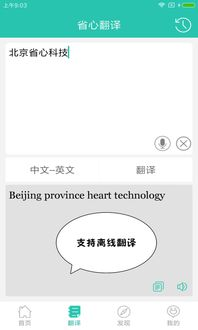With the globalization of economy and culture, the demand for high-quality translation tools, especially those converting Chinese to English, continues to rise. A dictionary that can accurately translate Chinese characters, phrases, or sentences into English is invaluable for students, professionals, and language enthusiasts alike. This article aims to delve into the features, benefits, and applications of such dictionaries, ensuring users can communicate, learn, and work more efficiently.

Key Features of Effective Chinese to English Dictionaries
The best Chinese to English dictionaries offer more than just direct translations; they provide contextual examples, pronunciation guides (using Pinyin for Mandarin
), and even cultural notes to aid understanding. These tools often integrate technologies such as optical character recognition (OCR
), which allows users to translate printed text and handwriting by scanning. Additionally, they might include speech recognition features, enabling spoken word translation, which is particularly helpful for learners and travelers.
Benefits of Using Comprehensive Translation Tools
Leveraging a robust Chinese to English dictionary brings numerous advantages. It facilitates better communication between speakers of these two major languages, contributing to smoother business operations, tourism, and educational exchanges. These dictionaries also play a crucial role in language learning, offering users the opportunity to expand their vocabulary, improve their pronunciation, and understand grammatical structures within real-life contexts.
Choosing the Right Dictionary for Your Needs
When selecting a Chinese to English dictionary, consider your specific requirements. Are you a language learner looking for detailed explanations and usage examples? Perhaps you're a professional in need of accurate technical translations? Some dictionaries are designed for general use, while others cater to specific industries like medical, legal, or technical fields. Reviewing the dictionary's features, such as its database size, update frequency, and user interface, can help determine its suitability for your needs.
Impact of Digital Advancements on Translation Accuracy
Digital technologies have dramatically improved the accuracy and efficiency of translation dictionaries. Machine learning algorithms continue to evolve, enabling these tools to understand context better, recognize idioms, and learn from user inputs. This evolution means that today's digital dictionaries can offer highly accurate translations that go beyond the surface level, providing users with not only the "what" but also the "why" behind certain phrases or linguistic nuances.
Future Trends in Chinese to English Translation Technologies
The future of Chinese to English translation dictionaries looks promising, with advancements in AI and machine learning paving the way for even more sophisticated tools. We can expect dictionaries that not only translate text but also interpret tone, sentiment, and cultural nuances, offering a more holistic understanding of the language. Furthermore, the integration of augmented reality (AR) could transform how we access translation services, making learning and communication more interactive and immersive.
In conclusion, Chinese to English translation dictionaries are indispensable tools in today's interconnected world, bridging communication gaps and fostering understanding between Chinese and English speakers. As technologies advance, these dictionaries will continue to evolve, offering more precise and nuanced translations that enhance learning, work, and cultural exchanges. Whether for personal use, education, or professional purposes, a high-quality translation dictionary is a key asset for anyone looking to navigate these two languages effectively.











评论区
提示:本文章评论功能已关闭